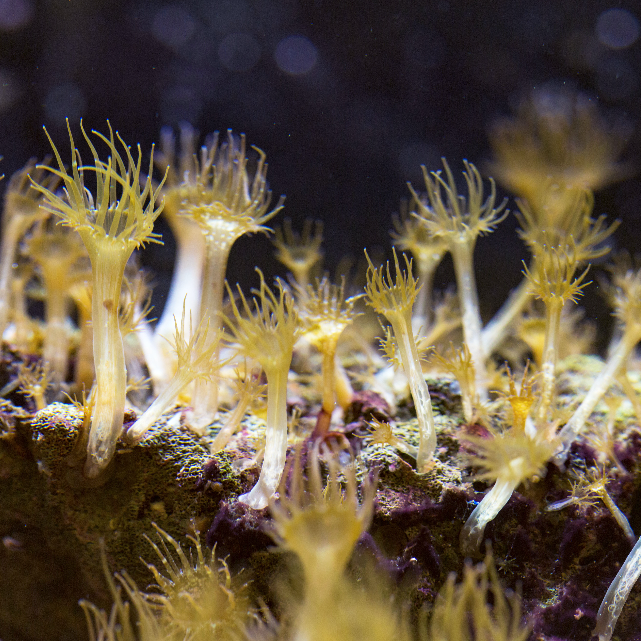Aiptasia
Otherwise known as Glass or Tube Anemones, Aiptasia are one of the most frustrating pests that reefers will encounter in the saltwater hobby. Their appearance is similar to that of miniature palm trees and they are generally either translucent or shades of brown or tan. Their coloration varies depending on the type of photosynthetic algae living within their tissue Aiptasia vary widely in size, ranging from a half inch to two or three inches. Their central oral disc is surrounded by tentacles and it is these tentacles that can sting and damage nearby corals. Aiptasia reproduce both sexually and asexually and can multiply rapidly.

While there are some pests where reefers disagree about how harmful they are, hobbyists universally regard Aiptasia as one to be removed as quickly as possible. Their tentacles pack a potent sting and they are capable of causing significant damage to corals in a home reef tank. Because they reproduce so rapidly, it is important to begin the process of removal as quickly as possible to prevent an outbreak from getting out of control. Aiptasia can also be unsightly and a significant outbreak can disrupt the visual appeal of the tank.
Due to the fact that Aiptasia are so common, and potentially damaging, there are a number of commercially available products that can be used, in conjunction with natural predation, to bring an outbreak under control. Unlike some pests, manual removal of Aiptasia is often not effective, as any small amount of tissue that is not removed will regrow. One product that is generally regarded as effective is Aiptasia X by Red Sea. This product will effectively kill Aiptasia, without harming other tank residents or corals. However, since Aiptasia X is only effective on Aiptasia that can be seen, it is usually combined with natural predation to effectively control an outbreak. Aiptasia Eating Filefish and Peppermint shrimp are often employed as predators for Aiptasia, and some reefers also report success with certain species of Butterflyfish.
Because Aiptasia can be so difficult to remove once established, it is important to dip all coral frags before adding them to a display tank. Another way to reduce the likelihood of introducing Aiptasia is to choose dry rock over live rock when adding rockwork to the aquarium.
While an Aiptasia outbreak can be frustrating, a combination of commercial products that target Aiptasia specifically, as well as the introduction of natural predators can go a long way to reducing their numbers.

